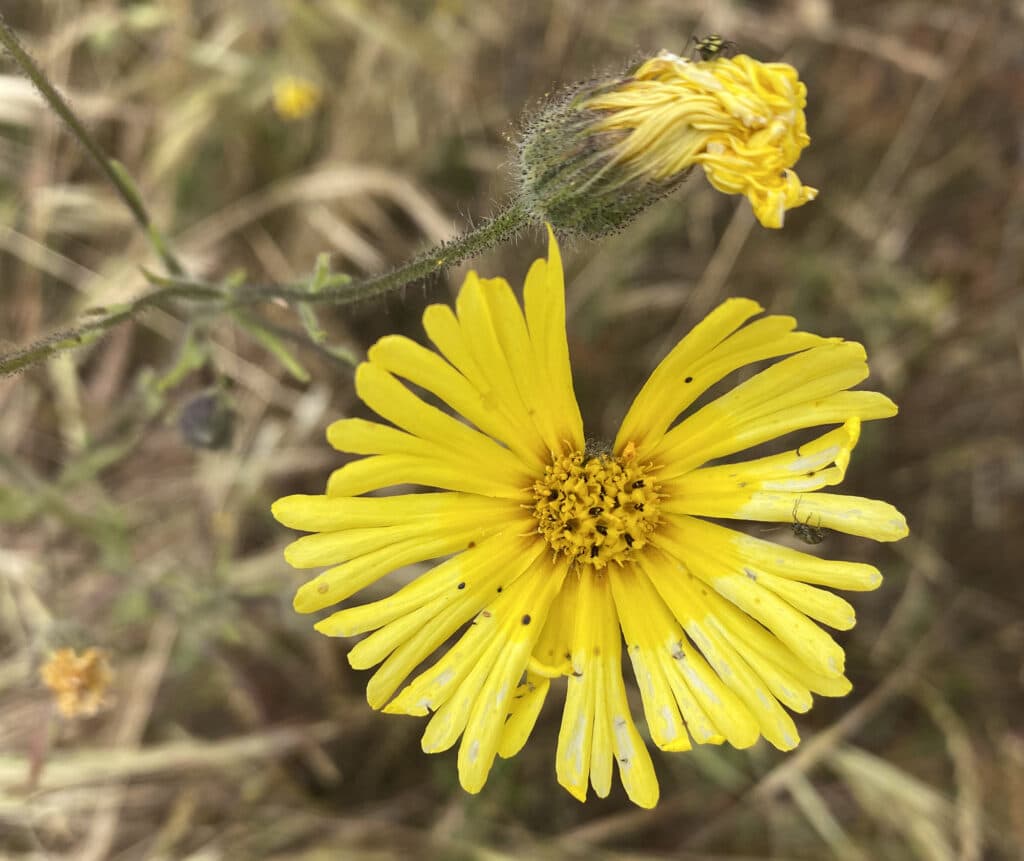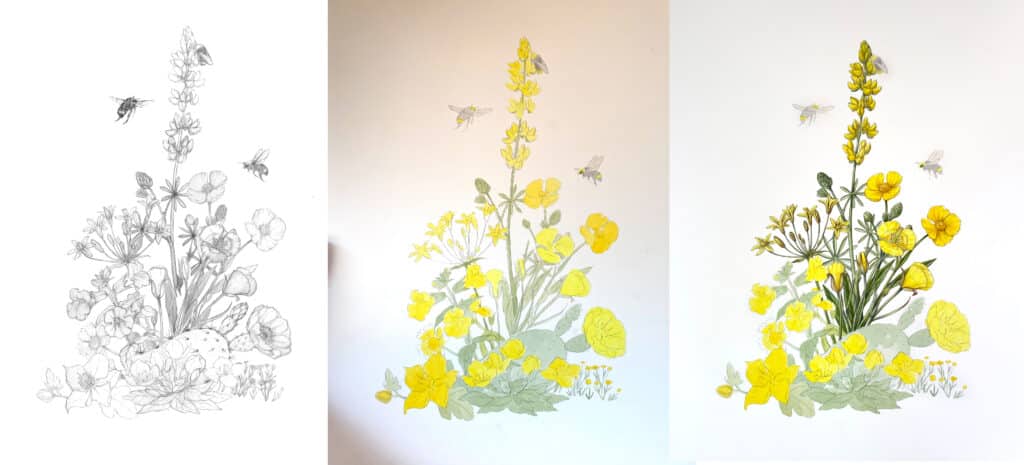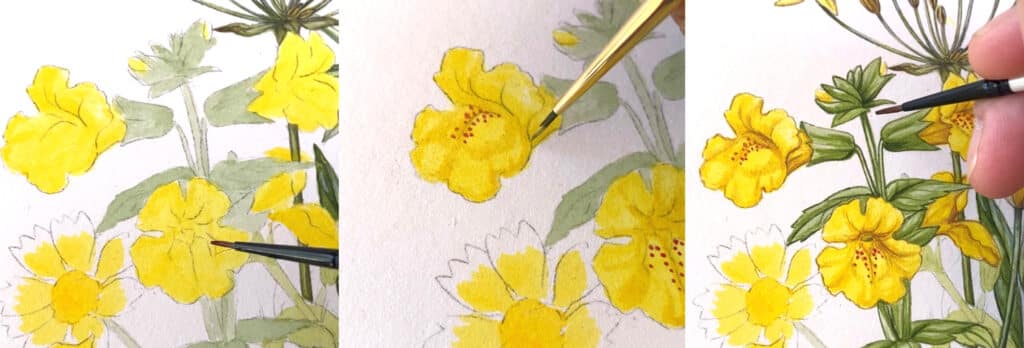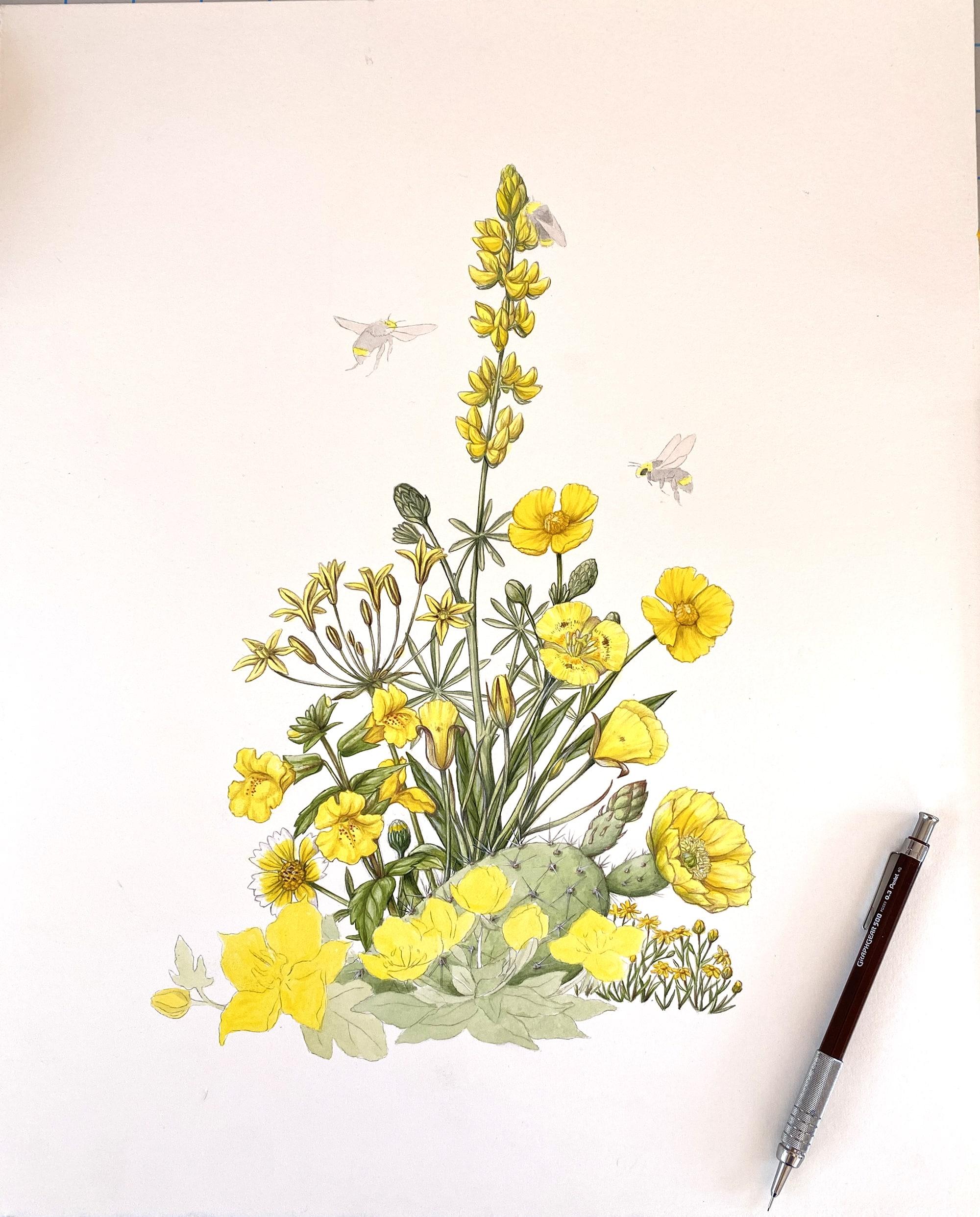For the past few months, I’ve been working on a painting of various California wildflowers, all in yellow. Apparently this has been seeping into other areas of my life, as I realize that I have multiple yellow dresses, yellow shoes, yellow Fiestaware bowls… a friend commented recently, “this is kind of your color right now!”

Common Madia, found in grassy meadows and on roadsides.
Choosing what flowers to include was a challenge. There are so many lovely yellow wildflowers up and down the state, from the lemon-yellow violets found in northern redwood forests, to golden cactus blooms in southern deserts. I spent way too many hours (like, a ridiculous amount) mooning over yellow blossoms online, in books, on hikes, even stopped at a traffic light. (Right now there is a gorgeous Madia in bloom all along roadsides where I live.)
I chose ten flowers (see the list below) and added three yellow-faced bumblebees, since I like to include some kind of floral visitor in my pieces. Aside from being little furry flower-bears that make everything better, bumblebees are known to be attracted to yellow flowers—the NY Botanical Garden’s website explains that “Bees do not see color the same way humans do, so they are attracted to certain flower colors. Plants on the blue and yellow end of the color spectrum attract bees because those are the colors they can easily perceive.”
Once I’d put together my layout, I blocked in color with thin washes of Liquitex acrylics, using lots of hansa yellow light, cadmium yellow medium hue, and brilliant yellow. Then I started adding more saturated color, shadows, and detail, reminding myself to use a light touch—yellow is the lightest color in the color wheel and is easily overwhelmed by other colors. In the past, I’ve overworked yellow in paintings of birds, insects, and flowers, making the yellow seem dirty or muddy. I was determined this time to be careful.

The painting in three stages—pencil sketch layout created; color blocked in using thin washes of acrylic; adding detail flower by flower.
I began by painting each flower with pure, saturated yellow, without adding any other colors. Then I mixed the yellow with just the tiniest bit of dioxazine purple, which made a slightly duller yellow; I watered this down and used it as a first pass for shadows. A second, slightly less watery mixture was used to deepen the darkest shadows, and to outline a few edges here and there. And then… I stopped. I was so tempted to add more shadow in places, but I made myself step away from the yellow and come back to the painting later—and for the most part, I didn’t add more. As someone who has a tendency to overwork paintings (and recipes, and blog posts), this felt like an achievement.

Three stages of adding color to these seep monkey flowers: thin wash of clear yellow acrylic; one pass of detail using muted yellows; second/final pass of shadows/detail lines.
I’m in the home stretch of finishing this painting and look forward to sharing it once it’s done. After that, I’ll be starting the next painting in this spectrum-themed series of California wildflowers—a composition of all green wildflowers. Perhaps in a few months, friends will start to notice that I’m wearing a lot of green sweaters, and earrings, drinking from my favorite green mug… I can’t wait.
••••••••••
Here’s the list of the flowers I chose for this painting:
- Yellow bush lupine (Lupinus arboreus)
- Island bush poppy (Dendromecon rigida)
- Pretty-face (Triteleia ixioides)
- Yellow mariposa lily (Calochortus luteus)
- Seep monkey-flower (Erythranthe guttata)
- Tidy-tips (Layia platyglossa)
- Engelmann’s prickly pear (Opuntia engelmannii)
- Flannelbush (Fremontodendron californicum)
- Sun-cups (Taraxia ovata)
- Common goldfields (Lasthenia californica)


